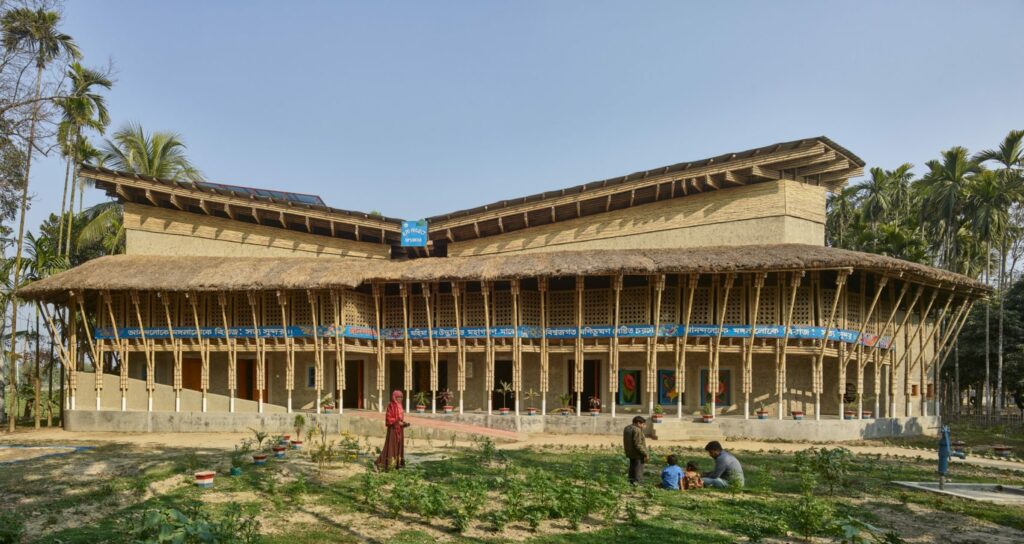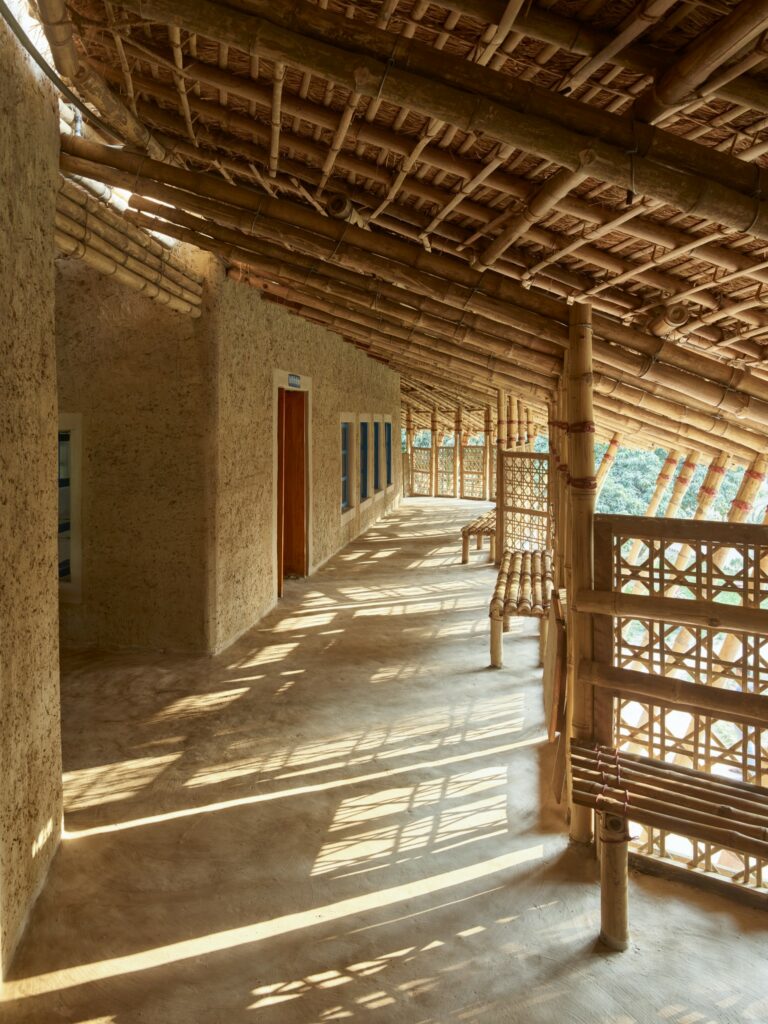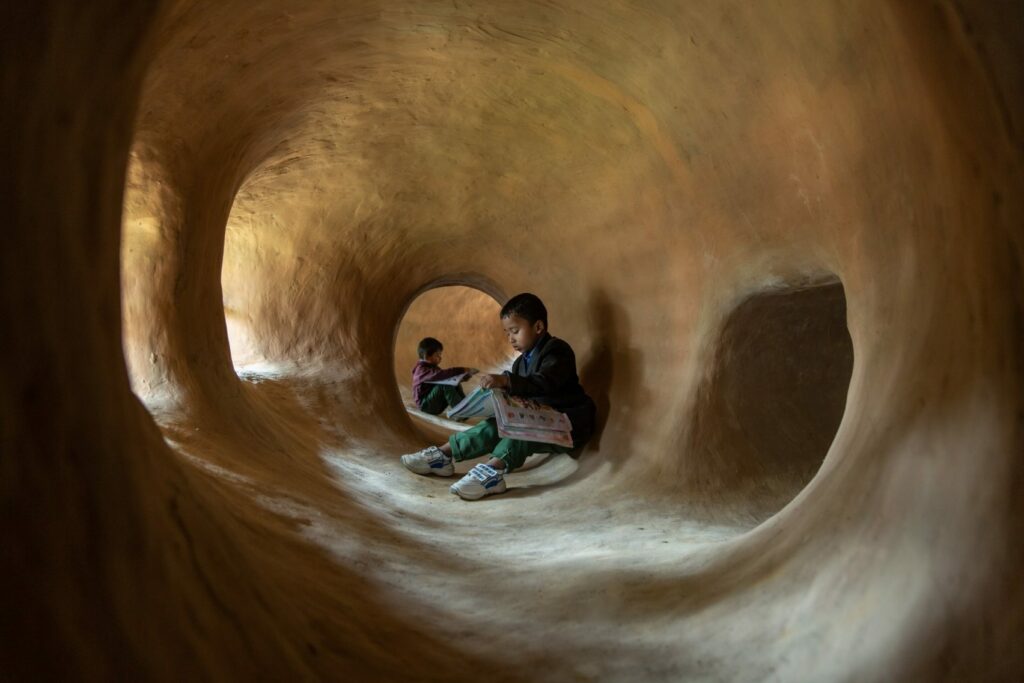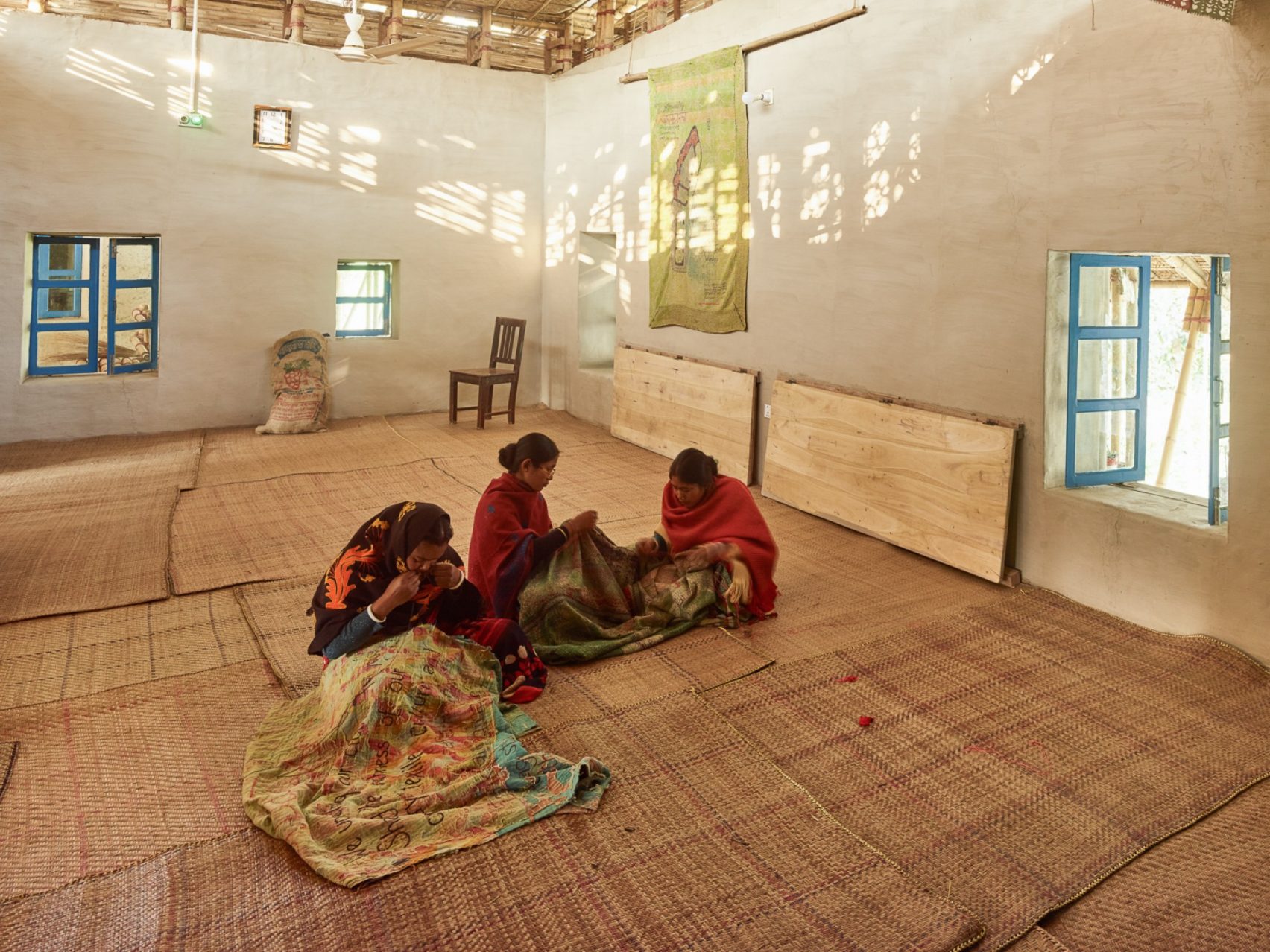German architect Anna Heringer designed the Anandaloy Center in Bangladesh as a pioneering project for the revival of mud construction in contemporary architecture. Housing both a disabilities center and a textile studio, Anandaloy, means “place of great joy.” Originally, the two-story building was to be solely a disability center, but the decision was later made to integrate a studio space for Dipdii Textiles, a women’s cooperative.
 “Mud is regarded as a poor and old-fashioned material and inferior to brick, for example,” she said. “But to us, it doesn’t matter how old the material is, it is a matter of our creative ability to use it in a contemporary way.” She called mud the “missing link that leads to social justice”, adding that “no other modern construction material has its scope or possibility”.
“Mud is regarded as a poor and old-fashioned material and inferior to brick, for example,” she said. “But to us, it doesn’t matter how old the material is, it is a matter of our creative ability to use it in a contemporary way.” She called mud the “missing link that leads to social justice”, adding that “no other modern construction material has its scope or possibility”.
“The truth is that once you become used to building like this, everything else becomes completely unnatural,” she said. “When you have leftovers, for example, with clay, you just put them back in the ground and do not worry about it,” she said. “Any material that cannot be picked up with your bare hands, that might require gloves, feels weird. As do the waste and toxic smells.”
 The thick walls of the building were created using an ancient technique known as cob, with local earth, straw, sand and water kneaded like dough and formed into walls atop fired-brick foundations. This technique avoids the need to use formwork, reducing the required materials but also making the work far less specialized, with the process therefore easier for the local community to participate in.
The thick walls of the building were created using an ancient technique known as cob, with local earth, straw, sand and water kneaded like dough and formed into walls atop fired-brick foundations. This technique avoids the need to use formwork, reducing the required materials but also making the work far less specialized, with the process therefore easier for the local community to participate in.
 It also meant that curves were easier to create, embraced in the rounded ends of the building and a first-floor access ramp that wraps the center’s sides.
It also meant that curves were easier to create, embraced in the rounded ends of the building and a first-floor access ramp that wraps the center’s sides.
 Inside, the disability center combines more conventional spaces, with cave-like tunnels and rooms serving as areas for relaxation and solitude, while the textile studio, office and storage occupies the first floor.
Inside, the disability center combines more conventional spaces, with cave-like tunnels and rooms serving as areas for relaxation and solitude, while the textile studio, office and storage occupies the first floor.
“Anandaloy does not follow a simple rectangular layout,” she said. “Rather, the building is dancing, and dancing with it is the ramp that follows it around. What I want to transmit with this building is that there is a lot of beauty in not following the typical standard pattern.”
 Bamboo sourced from a nearby forest frames a verandah around the center’s ground floor, while above bamboo screens provide shelter to an upper-level walkway.
Bamboo sourced from a nearby forest frames a verandah around the center’s ground floor, while above bamboo screens provide shelter to an upper-level walkway.
You can read the original article at www.dezeen.com

